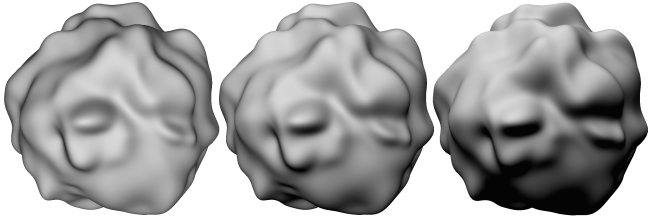The Assumed Light Direction for Perceiving Shape from Shading
James P. O'Shea, Martin S. Banks, Maneesh Agrawala
Abstract
Recovering 3D shape from shading is an ill-posed problem that the visual system can solve only by making use of additional information such as the position of the light source. Previous research has shown that people tend to assume light is above and slightly to the left of the object [Sun and Perona 1998]. We present a study to investigate whether the visual system also assumes the angle between the light direction and the viewing direction. We conducted a shape perception experiment in which subjects estimated surface orientation on smooth, virtual 3D shapes displayed monocularly using local Lambertian shading without cast shadows. We varied the angle between the viewing direction and the light direction within a range +/- 66 deg (above/below), and subjects indicated local surface orientation by rotating a gauge figure to appear normal to the surface [Koenderink et al. 1992]. Observer settings were more accurate and precise when the light was positioned above rather than below the viewpoint. Additionally, errors were minimized when the angle between the light direction and the viewing direction was 20-30 deg. Measurements of surface slant and tilt error support this result. These findings confirm the light-from-above prior and provide evidence that the angle between the viewing direction and the light direction is assumed to be 20-30 deg above the viewpoint.

The shading of an object’s surface depends on the light source direction. The light is directed from the viewpoint in the left image, from 22 deg above the viewpoint in the middle image, and from 44 deg above the viewpoint in the right image. The object is positioned identically in each of the three views. In this paper, we present an experiment designed to test how shape perception is affected by changing the angle of the light direction. We found the lighting used in the center image led to the most accurate estimations of 3D shape.